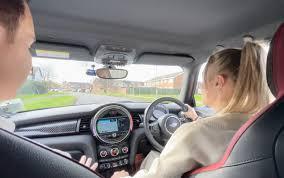Mastering the Road: The Ultimate Guide to Automatic Driving Lessons

Learning to drive is a major milestone, and for many new learners, automatic driving lessons offer a simpler, stress-free path to success. Whether you're a complete beginner or someone looking to switch from manual, automatic driving lessons can help you gain confidence and get licensed faster.
Why Choose Automatic Driving Lessons?
Automatic cars have no clutch pedal and don't require manual gear shifting, making them easier to drive—especially in busy traffic. Here are the key advantages:
1. Simplified Learning Process
-
No gear changes
-
No stalling
-
No clutch control
This means learners can focus more on road awareness, observation, and safety—rather than constantly thinking about gears.
2. Faster Test Readiness
Many learners pass their driving test more quickly in automatic cars because the lessons focus on core driving skills rather than mechanical operations.
3. Less Stressful in Traffic
Automatic vehicles are ideal for city driving. In start-stop traffic, they remove the hassle of constant clutch and gear work.
4. Ideal for Nervous Drivers
Automatic lessons reduce anxiety for learners who may find manual driving overwhelming.
Who Should Take Automatic Driving Lessons?
-
Beginners who want to pass fast
-
Drivers who’ve failed manual tests
-
Older learners or those with mobility issues
-
People driving mostly in urban areas
If you’re not planning to drive a manual car in the future, automatic could be the smarter choice.
What to Expect in an Automatic Driving Lesson
Automatic driving lessons follow the same structure as manual lessons—just without gear training. Here’s what your instructor will typically cover:
✅ Basic Controls
Learn how to operate the steering, pedals (accelerator & brake), and indicators.
✅ Starting & Stopping
Practice moving off safely, parking, and stopping smoothly.
✅ Road Awareness
Understanding road signs, markings, and hazards.
✅ Manoeuvres
Parallel parking, bay parking, turning in the road, and emergency stops.
✅ Roundabouts & Junctions
Safe decision-making and positioning.
✅ Mock Tests
Your instructor will simulate real test conditions to prepare you thoroughly.
Manual vs. Automatic License: What’s the Difference?
-
A manual license lets you drive both manual and automatic cars.
-
An automatic license only permits you to drive automatics.
Choose based on your long-term needs. If you're confident you'll never need to drive a manual, an automatic license is perfect.
Tips for Choosing an Automatic Driving School
When selecting a school or instructor, consider the following:
✅ Qualified DVSA-Approved Instructor
Make sure your instructor is fully certified and experienced with automatic learners.
✅ Dual-Controlled Cars
These allow the instructor to intervene for safety during lessons.
✅ Flexible Scheduling
Choose a school that offers evening or weekend lessons if you have a busy routine.
✅ Good Reviews
Look for testimonials or Google ratings to gauge customer satisfaction.
How Many Lessons Will I Need?
On average, learners need 25–30 hours of automatic driving lessons to be test-ready. However, this varies based on:
-
Personal confidence
-
Learning pace
-
Frequency of lessons
-
Instructor style
Some people may pass in 15 lessons, while others need 40. A good instructor will guide you honestly.
Cost of Automatic Driving Lessons
Automatic lessons can be slightly more expensive than manual because automatic cars cost more to maintain. Expect to pay:
-
£30–£40 per hour in the UK
-
Discounts for bulk bookings (e.g., 10-lesson packages)
Some schools offer intensive automatic driving courses to help you pass in a week or two.
Final Thoughts
Automatic driving lessons offer a fast-track, low-stress route to getting on the road. If you want convenience, confidence, and quicker results, learning in an automatic car is the way to go. Just make sure you choose the right instructor and stay committed.




